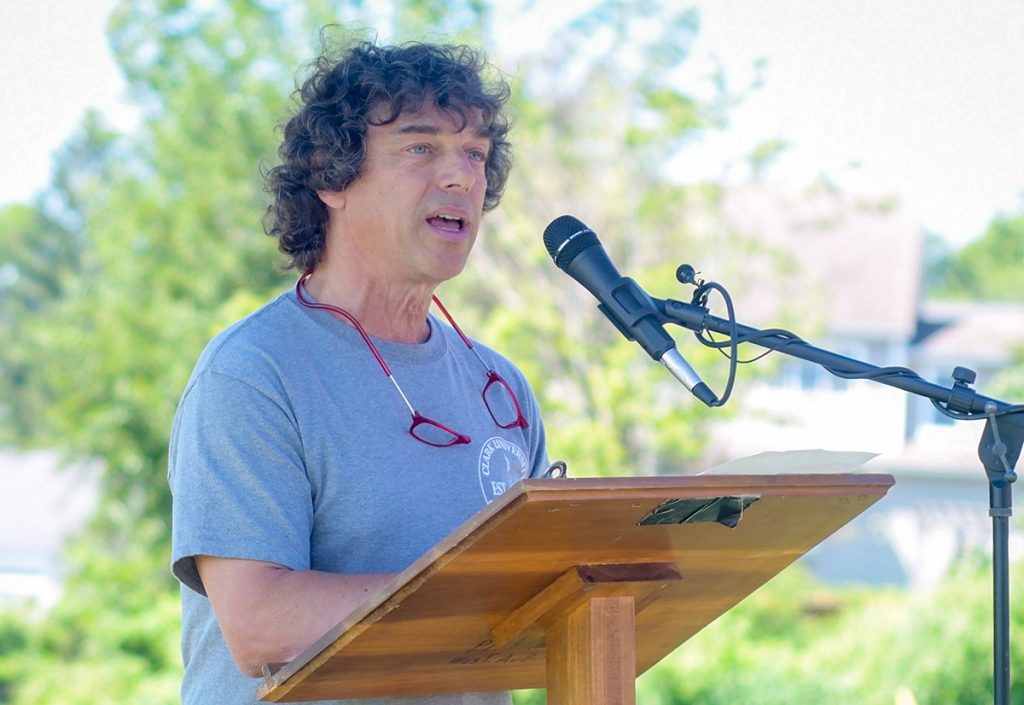Professor Chuck Agosta receives $670K National Science Foundation grant

Receiving a $440,000 research grant from the National Science Foundation is gratifying, but having the grant later increased by $230,000 defies easy description.
The NSF awarded the unexpected funding bump to Chuck Agosta, professor of physics, for his research proposal, “Charge modulation in unconventional superconductors.”
The news came with a catch: The NSF specified how the extra money was to be spent.
“I was notified in August that I’d received the initial grant for my superconductor research in high magnetic fields,” Agosta recounts. “Then shortly afterward, I got an email from the NSF asking me to redo my original proposal budget and add a helium liquefier — a $230,000 addition — which made the total grant come to $670,000. It blew me away. I don’t think there’s a helium liquefier in all of Worcester.”
Liquid helium is needed to cool materials to a temperature where they become superconducting — allowing electricity to flow through without resistance.
“All my experiments happen near absolute zero because most superconductors don’t become superconducting until you bring them below about 10 degrees Kelvin [about –441° degrees Fahrenheit],” he explains. “Many have to go down to 1 or 2 degrees. You need liquid helium to do that.”
The research described in Agosta’s NSF grant is part of a larger effort to better understand quantum materials — like superconductors — that are already in use, so the next generation of quantum materials can be discovered. These new materials are seen as essential to the technology used in creating electronic devices.
Present in nature as a gas, helium has the ability to achieve and maintain, via a compression cooling cycle, a liquid state just barely above absolute zero (–459.67° F). Among other uses, liquid helium is in demand by the semiconductor industry and for cooling the superconducting magnets at the heart of the magnetic resonance imaging technology used in health care.
Demand for helium, a noble gas first identified in 1868, did not ramp up until after WWII. Ironically, while it is the second most common element in the observable universe, helium is relatively rare in our Earth system. (It is present in the atmosphere, but at such low levels that capturing it is cost-prohibitive.) Most helium used today is a byproduct of drilling for natural gas.
Since helium gas is lighter than air — making it perfect for lifting party balloons and zeppelins — any uncaptured helium ascends into the atmosphere and eventually escapes into space. The NSF’s request that Agosta purchase a helium liquefier, a device that not only turns helium into liquid form but also captures and reliquefies the helium gas boiling from experiments so it can be reused, is a result of a federal initiative to encourage the recycling of helium. The price of the non-renewable resource increases as demand intensifies.
Agosta hopes the liquefier will make it possible to recover and reuse more than 90 percent of the helium gas he purchases (helium will still have to be purchased, but much less frequently). Other Clark physicists and chemists who use helium in their research will benefit from the new equipment, and students will learn about the helium cycle and how to run the system.
“I was worried about getting my experiments done at all because the price of helium has gotten so high,” Agosta says. “With the liquefier, we can do more experiments than we’d planned. To some extent we now have an infinite supply. As long as we can recover it well and don’t have to replace a lot of it, once we buy that initial amount of helium we just recycle and re-liquefy. It’s really exciting.”


